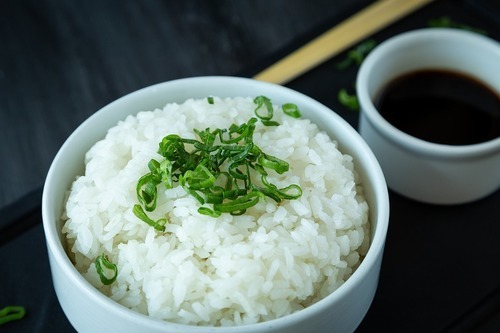
The Japanese have remained fairly consistent in their approach towards life. Besides respect and diligence, the Japanese are known to be very mindful of what they eat. It comes as no surprise that they still observe their traditional dietary habits to date.
Notably, the traditional Japanese meal slightly differs from most meals served in the west and some parts of Europe. For instance, a typical American four-course meal could have an appetizer, salad, main course, and a dessert served separately. In a typical Japanese home, all the food is presented at once. That said, here are some food items that constantly feature in Japanese food.
Rice
Rice is probably the first thing that comes to most people’s minds when they hear about Japanese food. Japanese prefer having rice steamed. Steamed white rice is locally known as hakumai, whereas genmai is the Japanese name for its brown counterpart. With rice being a staple to many, it is not a surprise that there are numerous seasoned rice dishes.
Nori or Furikake
Steamed rice is always enjoyed with some seasoned seaweed (nori). Some people prefer having a special rice seasoning known as furikake, specially made from dried vegetables, seaweeds, sesame seeds, bonito flakes, or sesame seeds.
Soup
Besides rice and the special seasoning, every Japanese meal is usually accompanied by a bowl of soup. There are different types of Japanese soup, the most common ones being the miso shiru and sumashi jiru. Miso Shiru is a miso-based soup, whereas sumashi jiru is made from seafood, vegetables, and proteins.
Protein
When it comes to proteins, any Japanese meal is highly likely to have an assortment of seafood. Japan’s proximity to the sea largely informs their centuries-old tradition of having seafood. Over the years, protein-based dishes like the kamaboko (fish cake) and the sakana no netsuke (simmered fish) have been a common feature in any Japanese meal.
Vegetables
Besides proteins, vegetables have always dominated Japanese cuisine. In most instances, Japanese vegetables are served simmered in dashi broth, sauteed, or steamed. The traditional favourite yaki nasu made from the Japanese eggplant garnished with ginger, green onion, bonito flakes, and some soy sauce remains a natural favourite.
Pickles
Japanese will always serve pickles alongside any meal, locally known as tsukemono. Pickle’s popularity in Japan is believed to have been inspired by the spread of Buddhism, which saw many people turn to vegetarian diets. Pickles are also a decent vegetable option in the dry season where there is insufficient fresh produce.
Most tourists visiting Japan are often left in awe after sampling Japanese food. Whether at a restaurant or a typical Japanese home, the authenticity of traditional Japanese food is impossible to ignore.